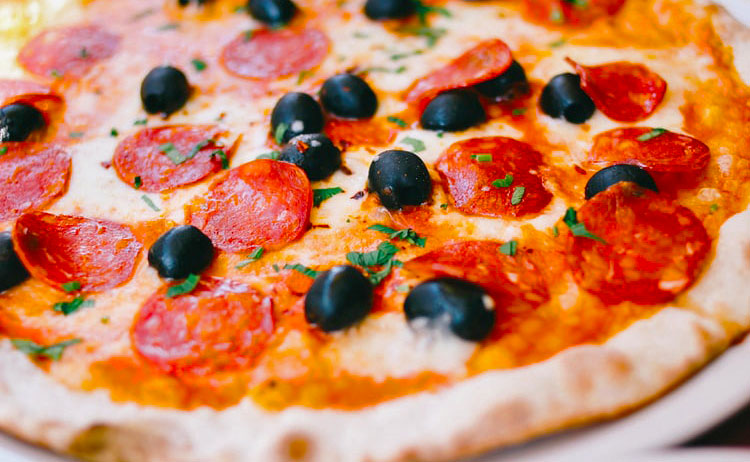Picture two slices of pizza.
One slice sits on a plate with part of the cheese ripped off and splatters of tomato sauce on the crust. There are a few unevenly cut mushrooms and onions sprinkled on it. The corner of the slice tapers off, curving down slightly.
The second slice is neatly cut. Light shines off its clean, white plate. Perfectly cut red and green bell peppers, mushrooms, and olives press into a soft bed of melted cheese. You can make out a bit of pizza sauce near the crust and see the layer is thick enough to taste, but thin enough to not overwhelm you. Which slice do you think is prettier? Which slice do you think tastes better? Which slice do you think is healthier?
A paper published in the Journal of Marketing titled “Pretty Healthy Food: How and When Aesthetics Enhance Perceived Healthiness” details a series of studies by Dr. Linda Hagen that examine “whether and how prettiness influences judgments of the food’s healthiness.”
Pretty foods and healthy foods
The naturalness hypothesis suggests that people perceive pretty things as more natural, and natural things as healthier. To test the applicability of the naturalness hypothesis to her own research, Hagen chose to analyze foods that were attractive according to classical aesthetics, one of the two branches of aesthetics. Classical aesthetics focuses on “order, symmetry, balance, clarity, and pattern repetition.” Since this is similar to patterns found in nature, Hagen decided to use that criteria to test her hypothesis.
The link between prettiness and naturalness
In one of her studies, Hagen showed participants pieces of avocado toast that only varied in “the presence of pattern repetition in its presentation,” or how attractive they looked according to classical aesthetics. Hagen also provided the participants with a list of ingredients in the avocado toast and listed its name in the picture.
The participants rated how low in fat, low in calories, natural, pure, unprocessed, tasty, flavorful, delicious, pricey, and expensive the toast looked. According to the study, “People found the avocado toast significantly prettier when it featured pattern repetition and order.” They also thought the toast was healthier when it was pretty despite having a list of ingredients. In contrast, taste “was unaffected by prettiness.”
What it all means
This research reveals several key pieces of information:
- According to the study, it shows that “classical aesthetics are a sign of naturalness”
- It adds to evidence that people perceive natural things as healthier
- It suggests that unhealthy food is not automatically perceived as tastier, which can make it easier for people to make healthier choices
- People, including those who want to eat healthier, can perceive unhealthy pretty foods as a healthy option.
However, Hagen made another interesting observation: “I found that a statement that explicitly reminds people that a pretty food was artificially modified for depiction can mitigate the effect. Given that it is not viable to prohibit firms from depicting food products in a basic aesthetically pleasant manner altogether, disclaimers may be the most practical solution.”



